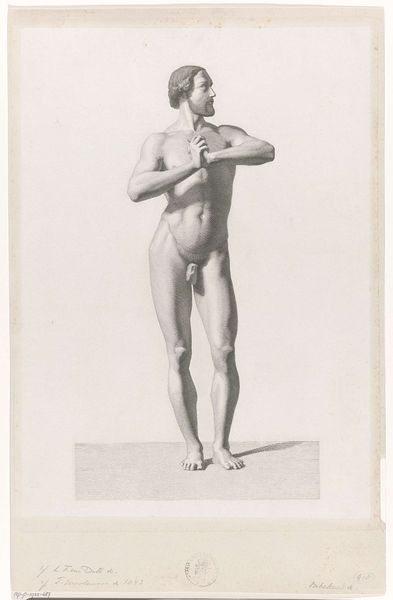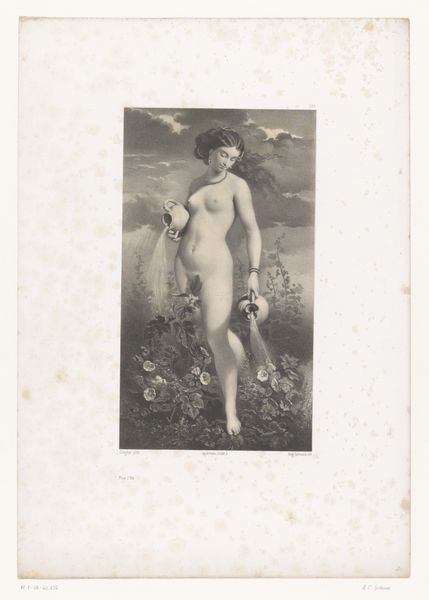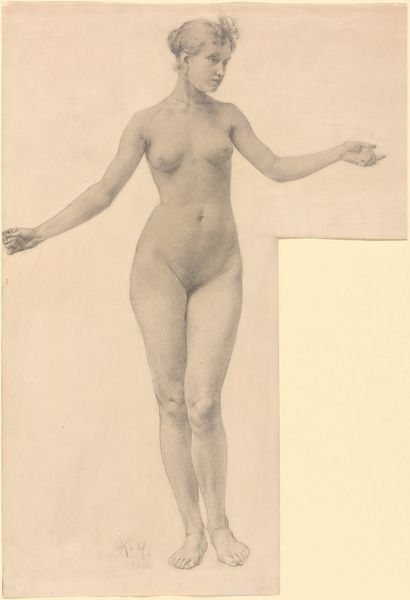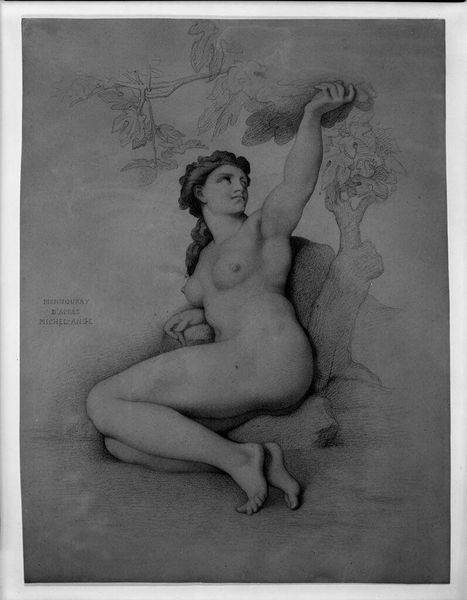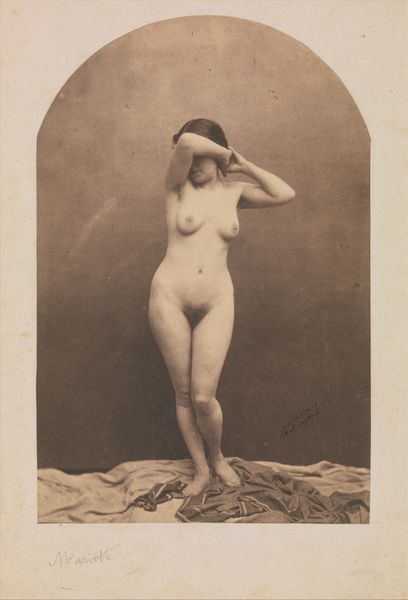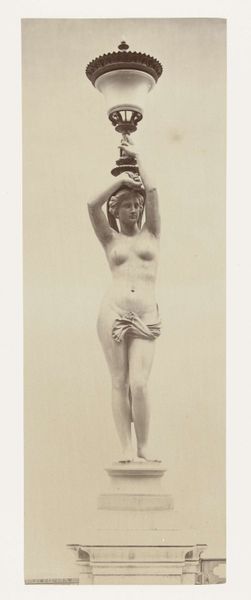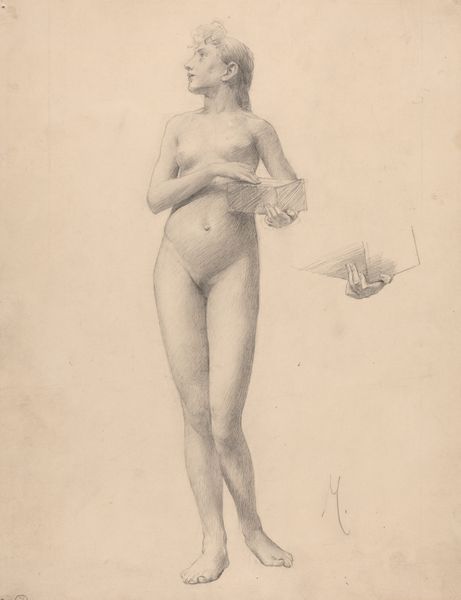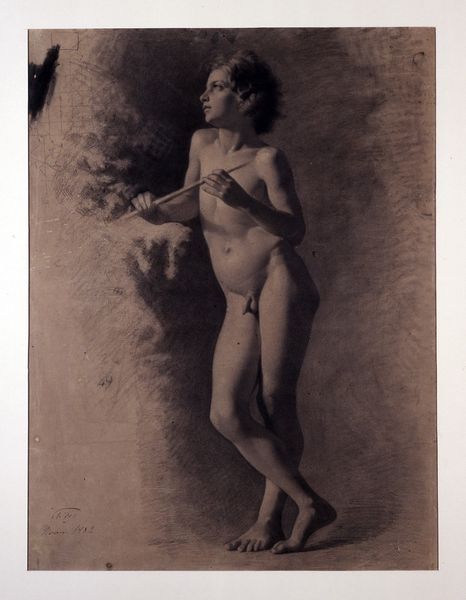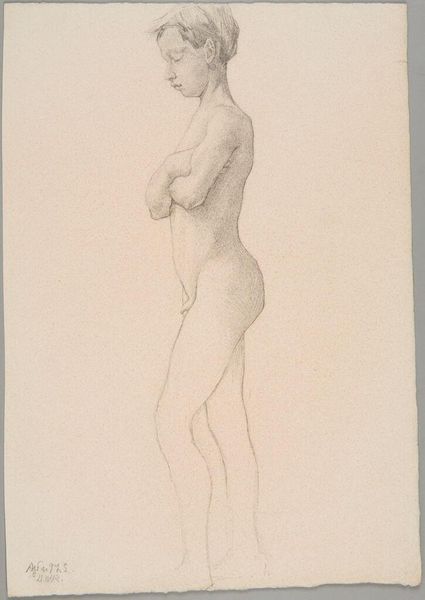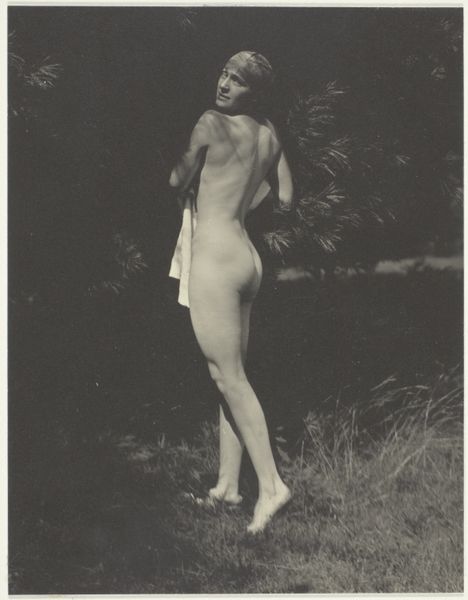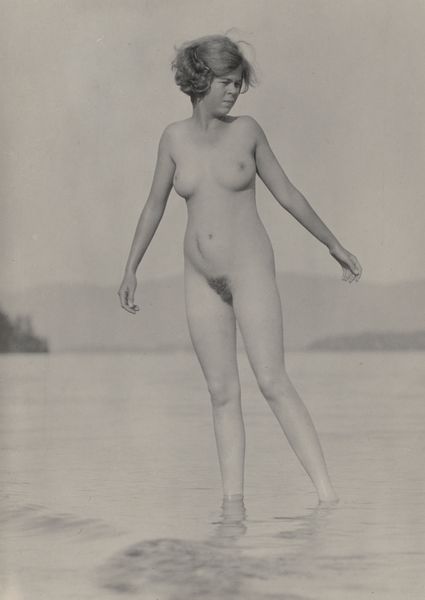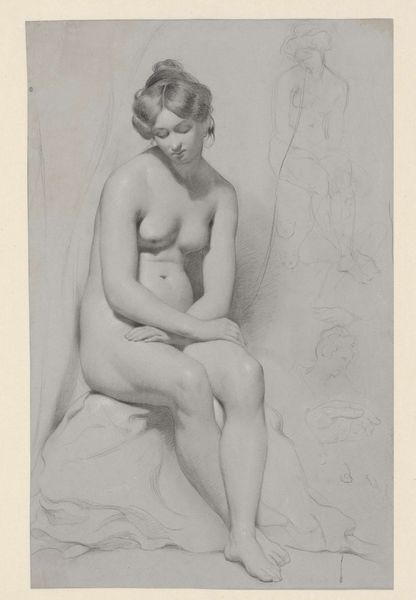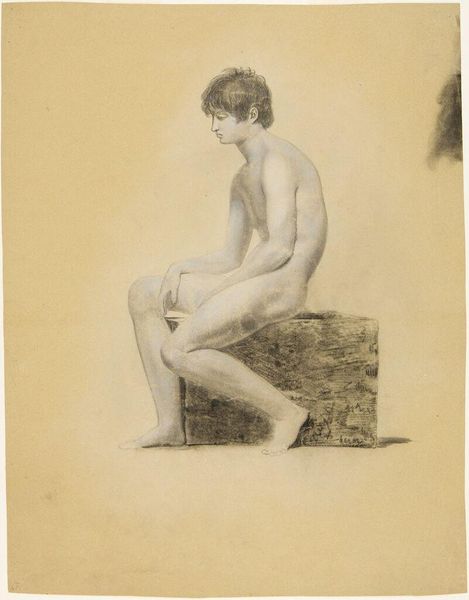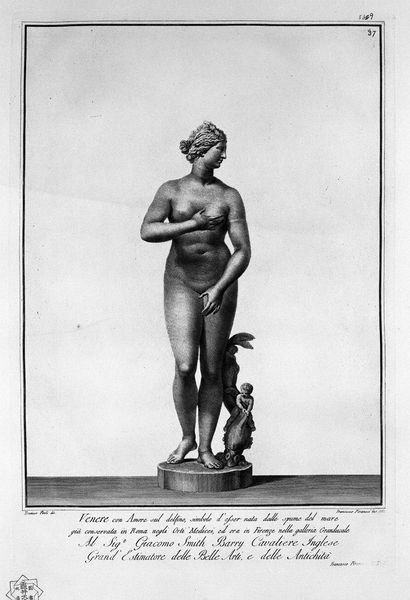
drawing, print
#
drawing
#
neoclacissism
# print
#
female-nude
#
academic-art
#
nude
#
realism
Dimensions: image: 16 x 11 7/8 in. (40.6 x 30.2 cm) sheet: 20 1/8 x 14 3/8 in. (51.1 x 36.5 cm)
Copyright: Public Domain
Curator: Let's turn our attention to Joseph Constantine Stadler's "Venus, or the Bath," created sometime between 1780 and 1822. The work on display here at the Met is a print and drawing. Editor: Immediately, the tonal gradations create a luminous effect. There is such a striking contrast between the darker rock and the pale figure of Venus, accentuated against the ethereal background of the sea and sky. Curator: Indeed. Stadler's print points to a fascinating tension of artistic production in this era. We have the classical subject matter conforming to Academic standards, realized through the labor-intensive medium of printmaking, which itself aimed at broader consumption beyond elite circles. What materials and processes afforded accessibility to this classical subject? Editor: Beyond its function as reproductive technology, the very form speaks to an underlying structural formalism. See how Venus’s figure creates a vertical axis, subtly mirrored by the verticality of the clouds. The careful use of light and shadow across her form underscores ideal anatomical proportions in the neoclassical style, aligning it within a clear lineage of artistic values and philosophies of beauty. Curator: The choice to portray Venus in a moment of quietude, perhaps vulnerable, raises further questions about its audience. Considering the role prints played in circulating imagery and ideas, this "Venus, or the Bath" opens into a debate of labor, class, and gender relations during a period defined by its social upheaval. Did Stadler intend this piece for instruction or admiration, given the subject of a nude female is presented for viewers outside of academic artistic spheres? Editor: Perhaps both? The pose invites semiotic readings, drawing on established codes for modesty and beauty while hinting at hidden narratives of mythological transformation through the symbolic context with bath and sea. These considerations of surface are themselves crucial. Curator: Very true. The artist leaves us plenty to contemplate regarding Neoclassicism, labor, and the evolving world that surrounds art creation. Editor: It reminds me just how much a seemingly simple composition reveals about enduring aesthetic ideals, when understood through attentive formal exploration.
Comments
No comments
Be the first to comment and join the conversation on the ultimate creative platform.
